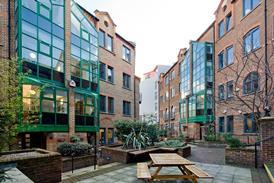Spiralling costs, tougher legislation, increasing interest rates and less favourable tax treatment are creating painful and costly challenges for buy-to-let (BTL) landlords.

BTL landlords are being squeezed with each Bank of England base rate increase.
The recent fast and significant hikes in BTL mortgage rates and lending costs are just the latest issue for BTL landlords in a bumpy few years.
The BTL market was created with the rent deregulation of 1988 and the launch of the BTL mortgage in 1996. These regulatory changes created a massive market that in 2022 is estimated to include 8.7 million homes worth £1.7trn.
In response to the 2009 banking crisis, for the first time in 400 years the Bank of England has held interest rates below 2% for a 12-year period. This means that over that period, the base rate has averaged 0.56% compared with the 9.2% average from 1975 to the present day.
BTL mortgage rates are rising. According to analysis from Moneyfacts, the average two-year fixed BTL rate rose from 3.22% to 3.41% in May, the highest rate since September 2015.
The growth in the BTL market has also begun to stall. The latest analysis from Fleet Mortgages shows that all regions have seen a slight drop in rental yields compared with 2021, with the exception of the North East, which remained unchanged. This is making property investment less attractive for individual landlords, particularly in London and the South East, with average yields in the Greater London area having stagnated at 4.5% since 2014.
Adding fuel to their woes, the government has not made it easy for landlords over the past seven years. Since George Osborne’s tax relief cuts, announced in 2015 and then implemented over the following four years, landlords have been left paying income tax on their rental income rather than their profit after finance and other costs have been taken into account. Increases in stamp duty surcharges from 2021 have also dampened the market.
Rental reforms are now in the pipeline in response to the cost-of-living crisis along with mandatory green upgrades, which come into effect in 2025.
With all these factors squeezing the amateur individual landlord, it can come as little surprise that those landlords are opting to exit the market as profitability becomes increasingly unviable, and margins are squeezed. The good news is there are options available to former landlords seeking to cash in on their portfolios.
Potential for diversification
Investing in Property REITs offers the potential for diversification and exposure to the UK commercial and residential property market. Alternatively, closed-end private equity property funds can be attractive although they often have considerable lock-ins of five to seven years, and can require large minimum investment amounts.
At Brickowner, we have seen a number of individual BTL landlords selling up their portfolios and investing the proceeds into property through property investment platforms such as ours, where they are able to diversify their investment, and target properties they like.
Property crowdfunding can offer diversification, lower fees and potentially more liquidity. Secondary markets, like the one Brickowner has launched, offer investors the opportunity to put their shares up for sale to other investors. Increasingly, as BTL becomes less attractive, investment platforms, REITs and other vehicles will offer investors access to property without the increasing pitfalls of direct investment.
Fred Bristol is chief executive of Brickowner






























No comments yet